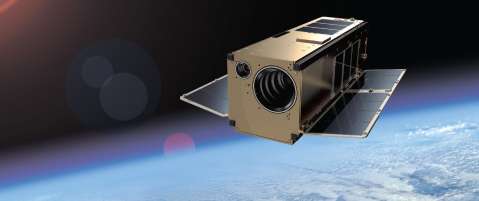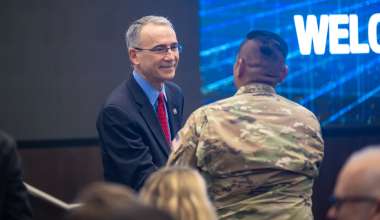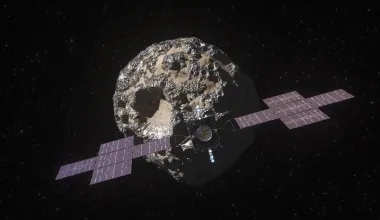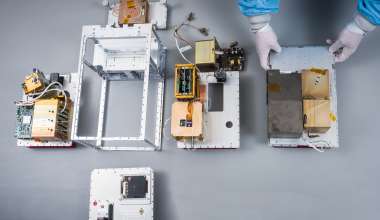Main-mission communication satellites, wideband links, command and telemetry, and terrestrial networks, along with their enabling technologies, are the domain of the Communication Technologies and Engineering Division. The division comprises all aspects, from architectures to implementation; our engineers work directly with corporate customers to ensure robust and resilient communications.
Aerospace maintains an impressive array of laboratories, software tools, and computing resources available to perform conceptual design, feasibility and trade studies, modeling and simulation, prototype construction, integration and test modeling, and anomaly investigation and resolution.
The division continues to push forward state-of-the-art efforts in advanced antenna design, digital signal processing, millimeter wave technologies, optical communications, and evolving regulatory processes employed to ensure the access of its customers to RF spectrum. Division staff on both coasts apply the fundamentals of communications to diverse areas including GPS signals and receivers, geolocation, and radar systems.

Optical, Laser, and Digital Communications

Rapid Prototyping

Radio-Frequency Electronics

Networking

Machine Learning
All Aerospace employees working in organizations with technical responsibilities are required to apply for and maintain at least a Secret clearance. U.S. citizenship is required for those positions.
Equal Opportunity Commitment
The Aerospace Corporation is an Equal Opportunity/Affirmative Action employer. We believe that a diverse workforce creates an environment in which unique ideas are developed and differing perspectives are valued, producing superior customer solutions. All qualified applicants will receive consideration for employment and will not be discriminated against on the basis of race, age, sex (including pregnancy, childbirth, and related medical conditions), sexual orientation, gender, gender identity or expression, color, religion, genetic information, marital status, ancestry, national origin, protected veteran status, physical disability, medical condition, mental disability, or disability status and any other characteristic protected by state or federal law. If you’re an individual with a disability or a disabled veteran who needs assistance using our online job search and application tools, or need reasonable accommodation to complete the job application process, please contact us by phone at 310.336.5432 or by email at ieo.mailbox@aero.org. You can also review Know Your Rights: Workplace Discrimination is Illegal, as well as the Pay Transparency Policy Statement.




